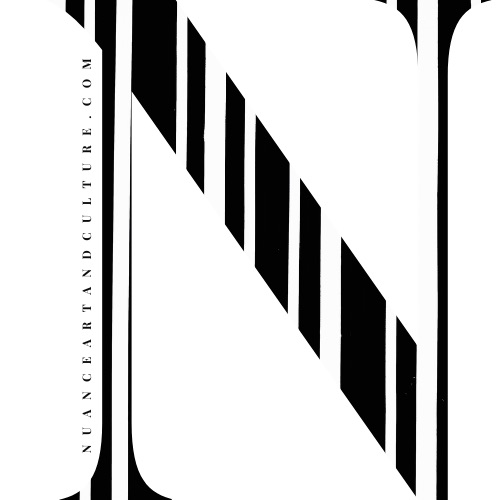Wang Zifan

Wang Zifan was born in 1997 in Sichuan, China.
Wang has been working in oil painting for six years, during which she obtained BFA and MFA degrees. Her artworks actively reflect on how individuals relate to other individuals as well as to groups, while also focusing on the conflict and coexistence of individuals, groups in spaces, whilst focusing on the importance of spatial relations in individual and collective experience.
Education
Painting BFA, VCU ARTS, Virginia Commonwealth University, Richmond, Virginia, the United States
Painting MFA, Tyler School of Art and Architecture, Temple University, Philadelphia, Pennsylvania.
Exhibitions
2022, MFA Thesis Exhibition (Solo), Temple Gallery , Rome, Italy.
2019, BFA Thesis Exhibition, VCU ARTS, Richmond, Virginia.
Curating
2022, MFA Thesis Exhibition (Solo + Group), Temple Gallery, Temple University, Rome, Italy
2022, BFA Group Exhibition, Temple Gallery, Temple University, Rome, Italy
2021, BFA Senior Exhibtion, Temple Gallery, Temple University, Rome, Italy
2021, Hide and Seek, Temple Gallery, Temple University, Rome, Italy
2019, BFA Thesis Exhibtion, VCU ARTS, Richmond, Virginia
Artist Statement
The discussion on individual psychologicy and its connection with psychology space and the physical world are important to the past two years of my practice. I am trying to figure out the existence of imagery in connection with unconscious psychological motivations, trying to figure how imagery appears from this connection in a feedback loop with the physical world.
The inspiration of catching unconscious imagery comes from a desire for talking and expressing after a long time of personal isolation. This isolation has not only been spatial but also cultural. In the past two years, I lived in China and Italy and these two countries both made me feel out of place.
In the silent COVID years in China, my practice was stopped due to reasons including miscommunication as well as space limits and time difference. My mind was isolated. But when I went to Italy and participated in studio art again, the cultural differences and extremly unknown surroudings also made me feel that I couldn’t locate myself.
The constant pains of loss and isolation produced a desire for shouting and reconstructing a connection to my surroundings, especially at the moment when I had strong and uncontrollable psychologial impulses, so that I found myself able to capture these strongest impulses in paint.
I allowed myself to pour out all my emotions, to expose how I had come undone, as the unpredicaticable brushstrokes occurred upon the painted surface. The whole process was illogical and natrually directed by my body, giving the paintings a sense of being free and relaxed. At the same time, I accepted and used the natural textures of the painting materials, such as the wrinkles on the canvas and the damaged brushes. These material features were involved as parts of the paintings and provided an additional layer of documentation to the action of art creation.

Window on the Metro Line A
Wang Zifan, Oil on canvas, 172 cm x 191 cm, 2022.
Text: Wang Zifan
“The word ‘affect’ in Geographies of Feeling has much more meaning and weight for me than does the word ‘geography’. When I ruminate on my memories of the countries and cities I have lived in and survived throughout my twenty-six years of life, whether in my hometown or in distant Europe or North America; what appears in my mind is never a specific landmark, but the strong feeling and destructive impact of living in an unfamiliar place, as well as being surrounded by unknown people in an unfamiliar environment.
On a normal day in the spring of 2022, I finished work and waited for the train at the Metro Line A of the Rome Metro. At the Espana metro station, which is a very bustling place, I looked around at these strange faces. Their expressions were so different from mine; they were all speaking Italian but my native Chinese and everyday English were foreign languages.
I suddenly realized that in the closed and dim space of the metro station, this place provided for my existence, had been compressed by the atmosphere of the crowd to only the size of this small floor tile I was standing on, and I lacked any weapon with which to tear through this barrier. The urge to tear this barrier down and the desire to speak and leave traces of my presence in this space was so strong and aggressive, like a prey trying to break through a circle of predators. This whole experience happened in the span of an instant.
I didn’t get on that train, and after seeing the red train full of people leaving, I went back to my studio. I painted the metro station and the metro windows in flowing brushstrokes along the tracks and the dynamics of the primer I had applied. This time I did not apply a whole white base over my canvas again, but left parts of the canvas to be exposed, as a small place to breathe and talk.”

Photo Credit:Yan Er Lu Art International
Piece Description
Text: Sophie Su
“The spatial language of color can undoubtedly be used to express anything that exists in human consciousness.” (Patrick Heron)
Color is a geographical form of localization, transcending the visual to create an atmosphere that expresses what is going on inside the creator’s mind at a particular moment in time. Painting is a landscaped mental image and emotion, inextricably linked to place.
Wang Zifan uses mark-making to express her feelings about what she has experienced, responding to current events in order to empathize with the viewer.
The abstract expression of rich texture, condensing in the frame a deeper and darker emotional depth in the subconscious, is the artist’s perception of her own and others’ current situation. There is a sense of power and the presence of something solid that has been stored up for a long time and is about to burst forth.

Scan the QR code,
Following us to read more


Recent Comments